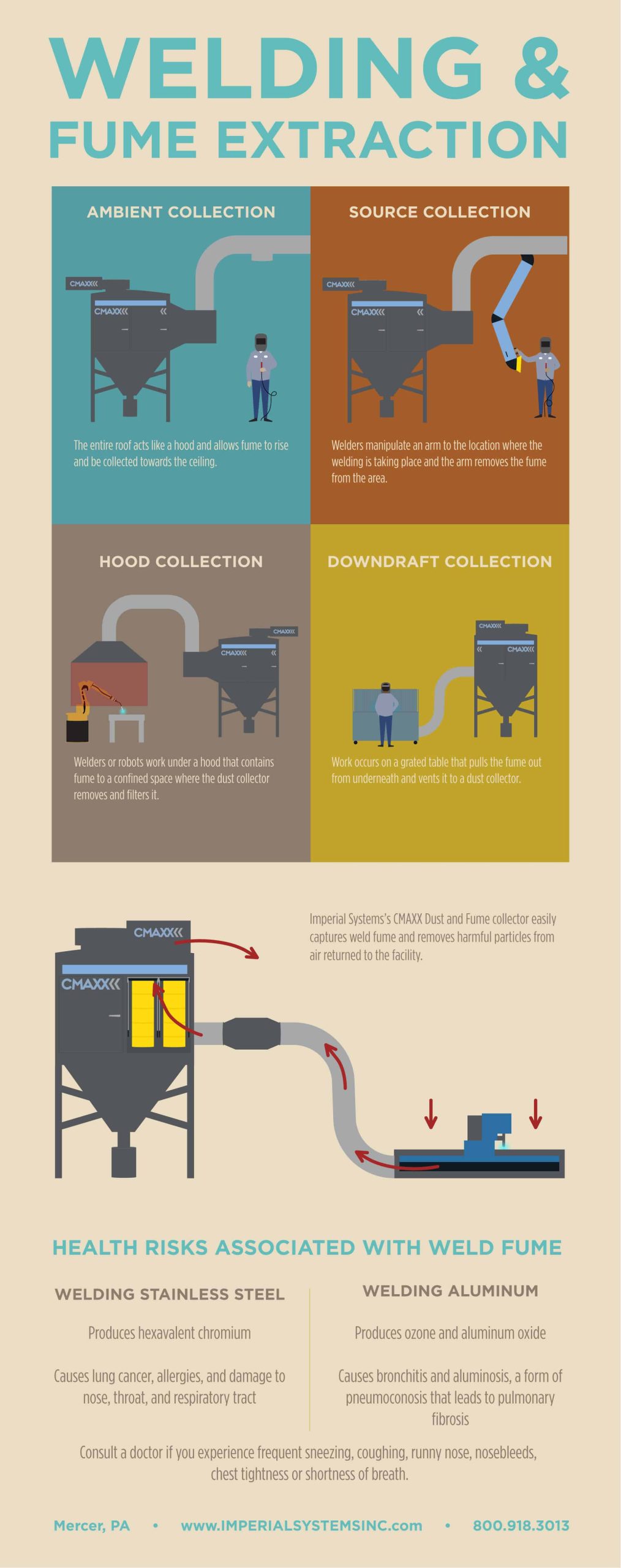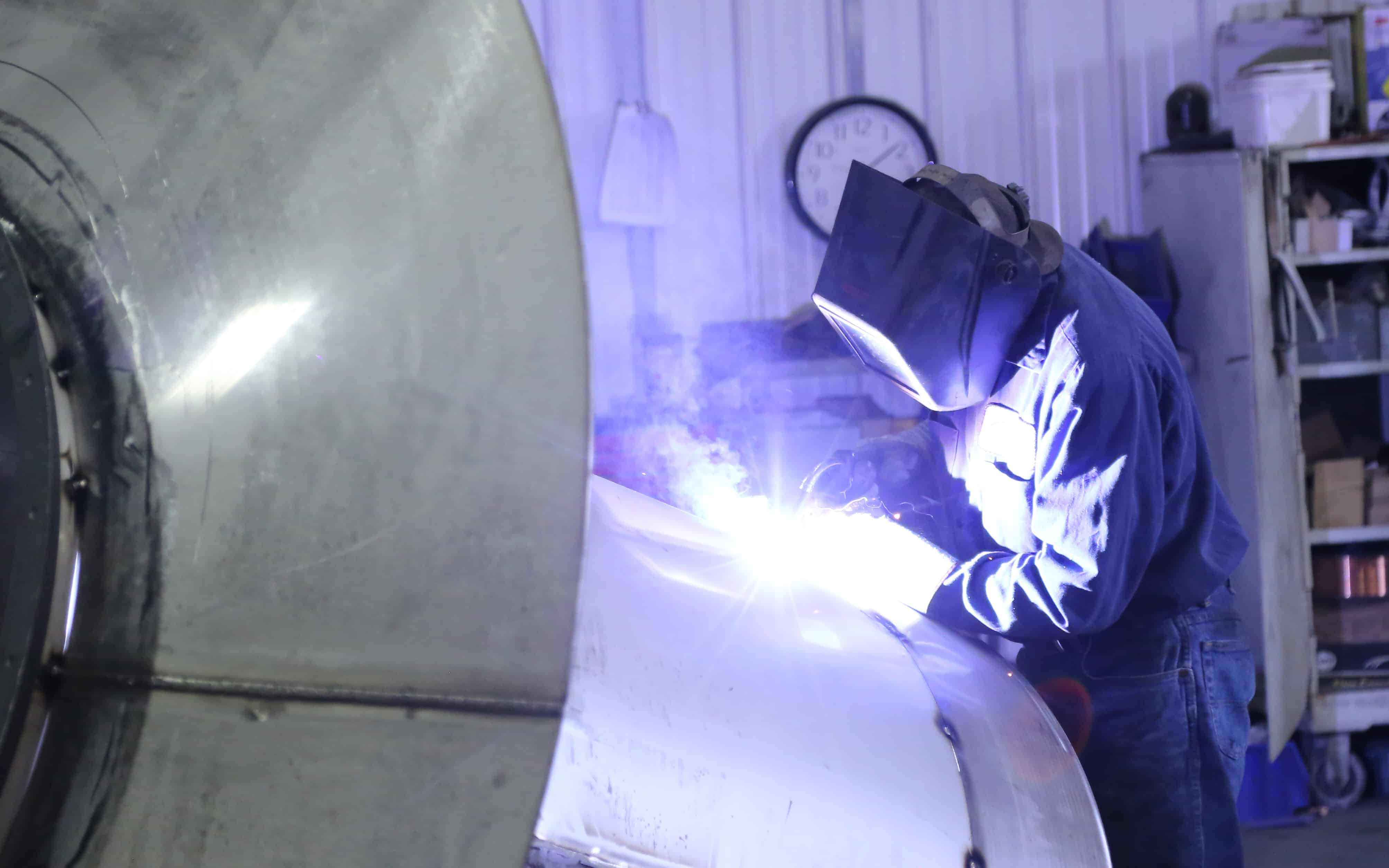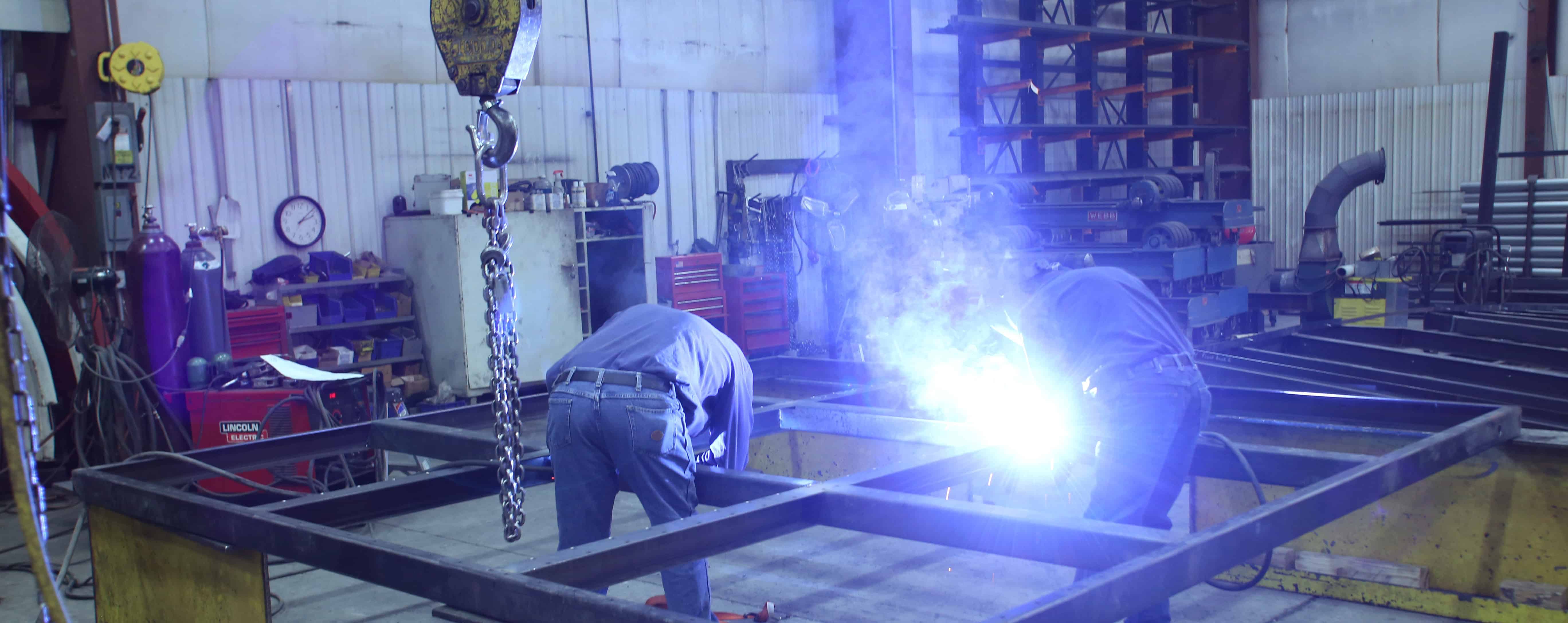This weld fume extraction guide takes a look at the many ways to collect and remove weld fume from a facility. When not properly taken out of the work area, weld fume can cause some serious health issues for welders.

Weld Fume Extraction Methods
- Ambient Collection – The entire roof acts like a hood and allows fume to rise and be collected towards the ceiling. Ductwork runs with inlets above the work area to clear the fumes.
- Source Collection – Welders manipulate an arm to the location where the welding is taking place and the arm removes the fume from the area.
- Hood Collection – Welders or robots work under a hood that contains fume to a confined space where the dust collector removes and filters it.
- Downdraft Collection – Work occurs on a grated table that pulls the fume out from underneath and vents it to a dust collector.
Health Risks Associated with Weld Fume
Welding Stainless steel
- Produces hexavalent chromium, a dangerous valence state of the element chromium. Chromium metal is added to alloy steel to increase hardenability and corrosion resistance.
- Causes lung cancer, allergies, and damage to the nose, throat, and respiratory tract
Welding Aluminum
- Produces ozone and aluminum oxide. TIG, MIG, and plasma-arc welding typically produce ozone, a highly toxic gas. Aluminum oxide forms from the base and filler materials and exists in the welding fumes.
- Causes bronchitis and aluminosis (aluminum lung), a form of pneumoconiosis that leads to pulmonary fibrosis
Consult a doctor if you experience frequent sneezing, coughing, runny nose, nosebleeds, chest tightness, or shortness of breath.
Weld Fume Extraction Equipment and Experts
The CMAXX Dust & Fume Collector by Imperial Systems is the best choice for removing weld fume from your facility and keeping your employees safe. Our sales and product engineers will design and dust and weld fume collector specifically for your application. Contact us today.

